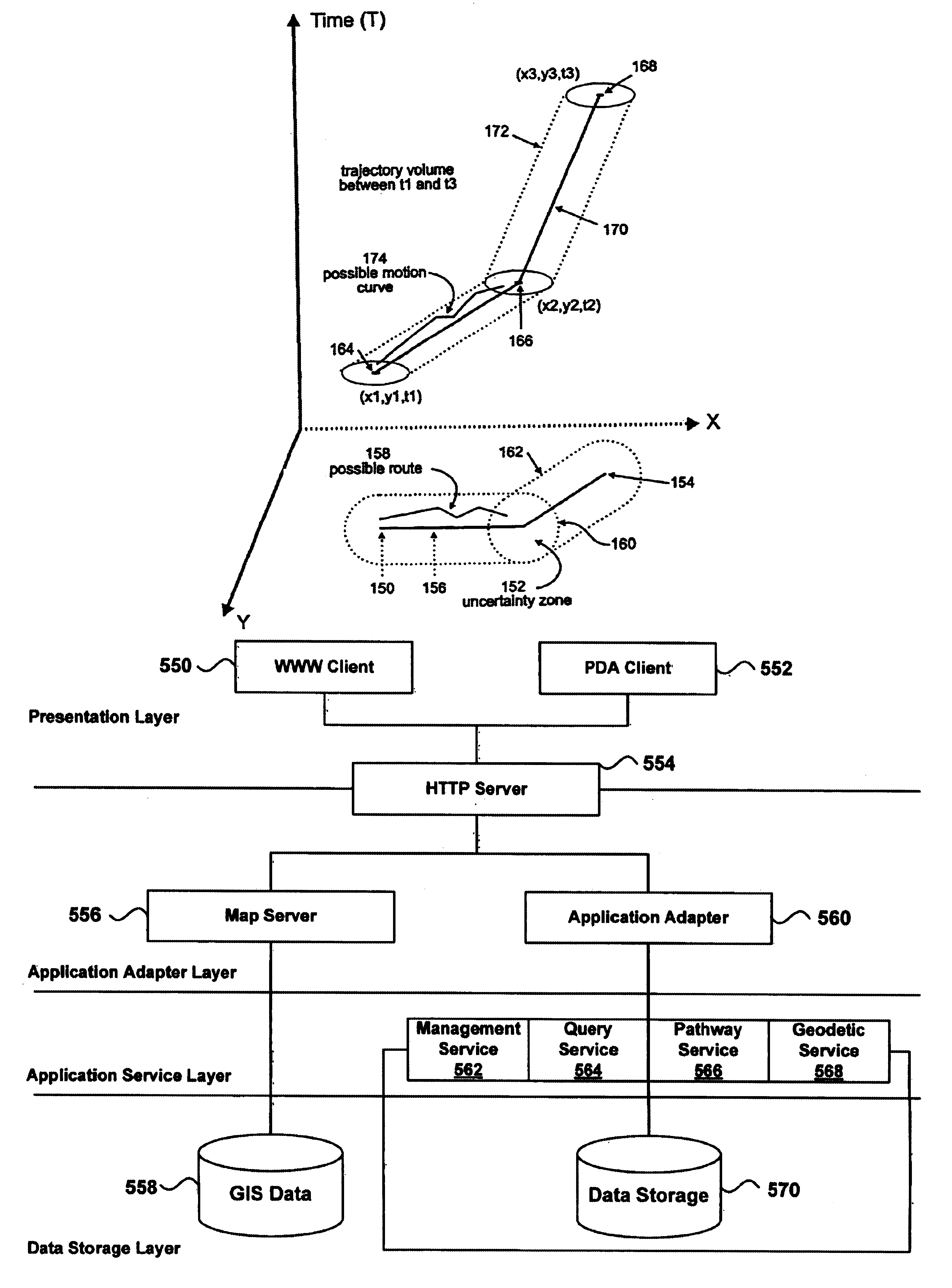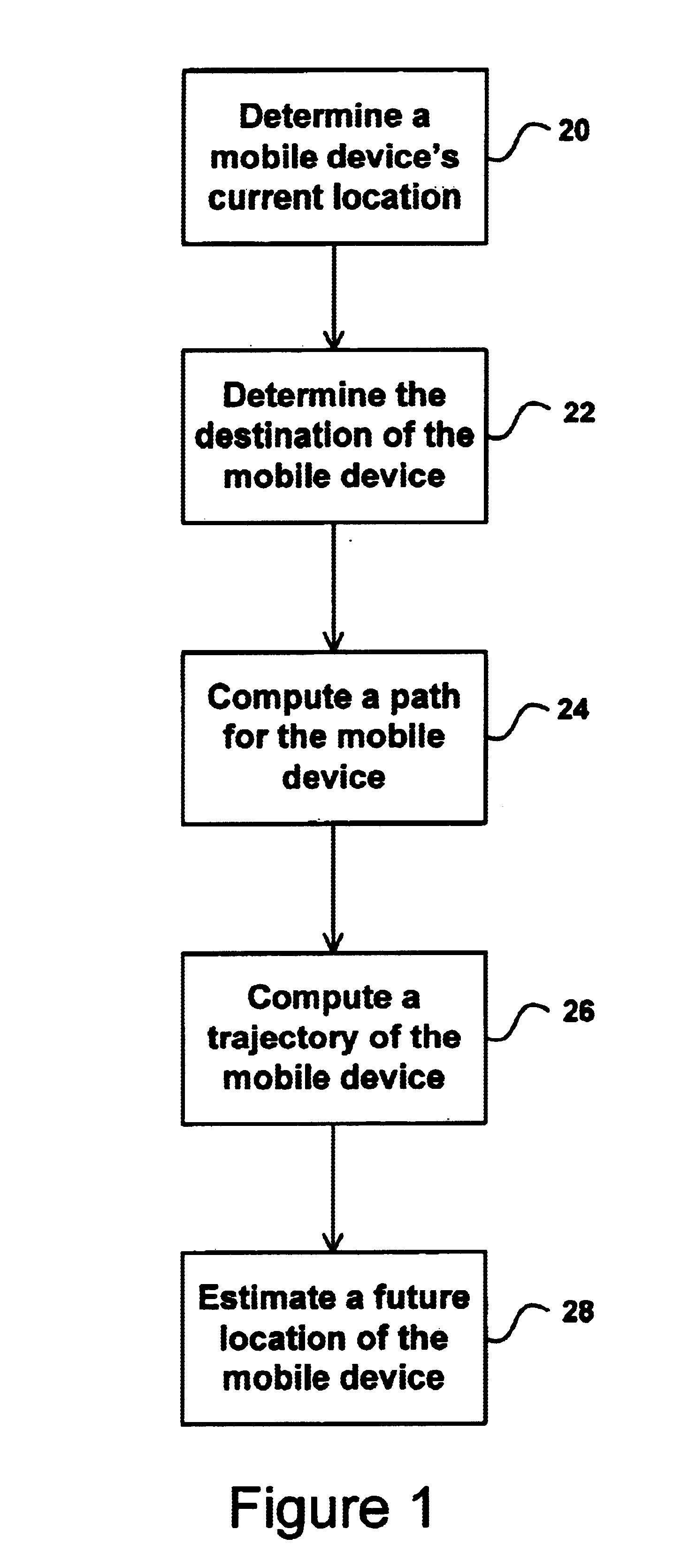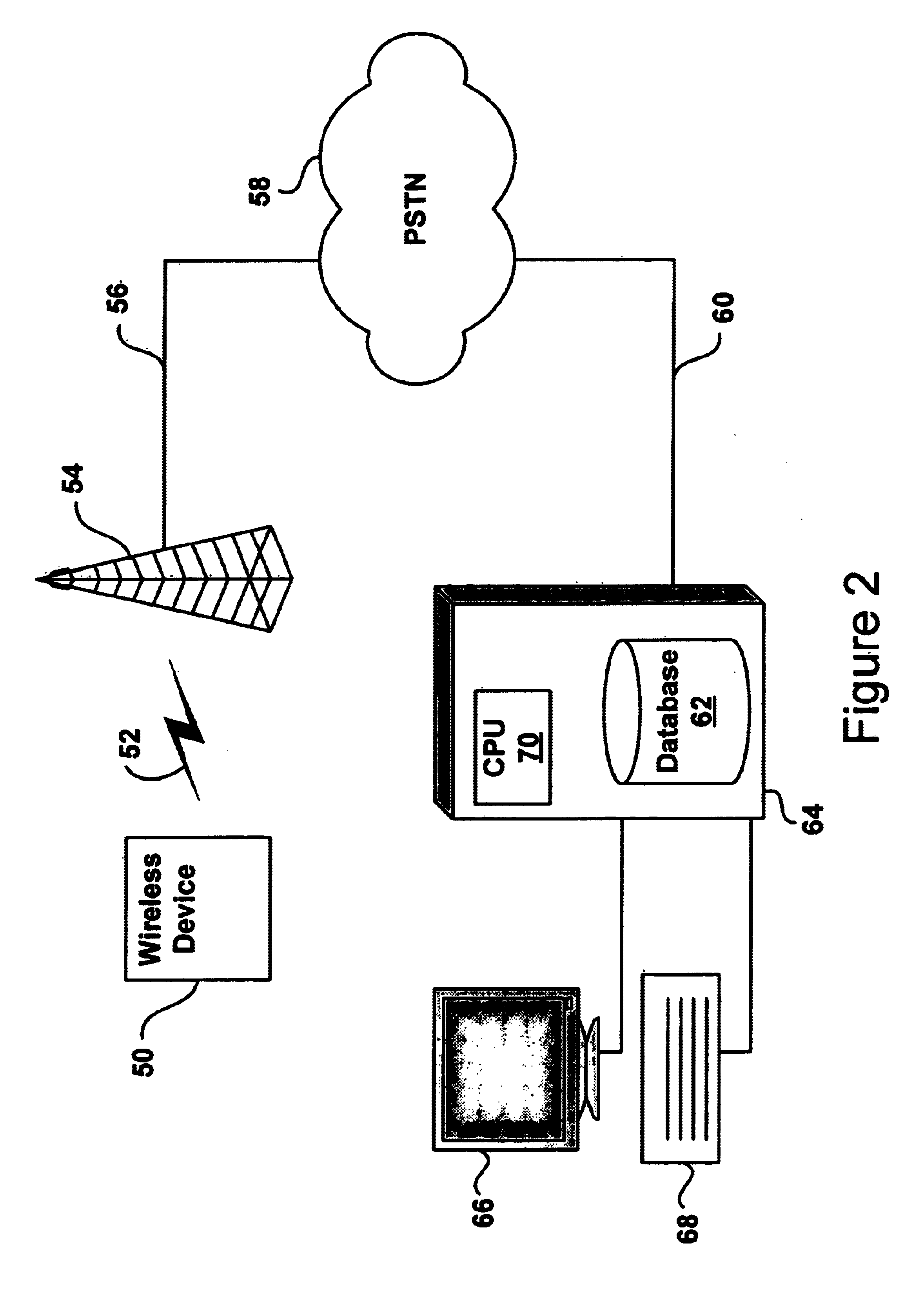Method and system for querying in a moving object database
a database and moving object technology, applied in the field of tracking moving objects, can solve the problems of unsatisfactory bandwidth spike on the network, limited system resources such as bandwidth and processing power, and trade-off between precision and resources
- Summary
- Abstract
- Description
- Claims
- Application Information
AI Technical Summary
Benefits of technology
Problems solved by technology
Method used
Image
Examples
example database
SYSTEM CONFIGURATION
[0200]A mobile object database (MOD) can be implemented in many different configurations. In a preferred embodiment, the MOD provides inheritable abstract data types (ADTS) for moving objects, a set of query operators, methods to define and manipulate the abstract data types, and geodetic and trajectory finding services. When combined with the application tier, the MOD can connect to wireless and World Wide Web (WWW) applications.
[0201]FIG. 12 depicts an exemplary configuration for the database. The database uses two types of clients, a WWW client 550 and a PDA client 552; however, it is possible to use additional or fewer clients. The WWW client 550 monitors moving objects. Users may use the WWW client 550 to query the moving objects, monitor and review their motion, and communicate with the database or with other devices. It can display a graphical user interface of various queries, and it may provide trajectory visualization, triggers and notifications. Additi...
PUM
 Login to View More
Login to View More Abstract
Description
Claims
Application Information
 Login to View More
Login to View More - R&D
- Intellectual Property
- Life Sciences
- Materials
- Tech Scout
- Unparalleled Data Quality
- Higher Quality Content
- 60% Fewer Hallucinations
Browse by: Latest US Patents, China's latest patents, Technical Efficacy Thesaurus, Application Domain, Technology Topic, Popular Technical Reports.
© 2025 PatSnap. All rights reserved.Legal|Privacy policy|Modern Slavery Act Transparency Statement|Sitemap|About US| Contact US: help@patsnap.com



